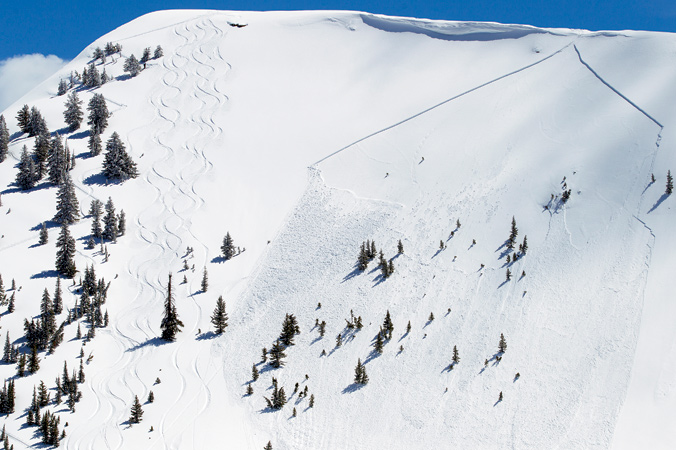Knowledge is power and, in the mountains, it leads to powder. But getting there and doing it safely takes time, practice and lessons both formal and not. And this year’s Skills Guide is a platform from which to dip a toe into the off piste, the impetus to dive headlong into a backcountry education or an opportunity to refresh and rethink personal processes. Because no matter your background, there’s always more to learn. And, just like traveling through the mountains, there’s pleasure in the pursuit.
—
Ian McCammon popularized the term “heuristics” in avalanche education in 2002. In his widely circulated article, “Evidence of heuristic traps in recreational avalanche accidents,” the National Outdoor Leadership School educator found that human factors—defined as familiarity, social proof, commitment and scarcity—play a significant role in avalanche accidents. His other major finding suggests that group size can influence bad decisions, too.
Here’s how well-managed group dynamics can lead to safer travels.

Traps and trees in Alta, Wyoming’s Grand Targhee backcountry. [Photo] Greg Von Doersten
Plan, Prepare, Prelect
Whenever it comes to a hut trip, there’s never a lack of communication surrounding who’s bringing the beer. But why limit this type of chatter to cabin-bound libations? On any outing, chat among your partners about who’s bringing what, either before leaving home or before shoving off from the trailhead, to ensure the essentials are included and not unnecessarily duplicated. Is there a first-aid kit in the group? Does everybody have crampons? Mind if I bring my dog? Take the lead on doing a beacon check and ensure that everyone’s on the same page for the intended tour, both of the duration and day’s hazards.
Talk It Out
Communication is the silver bullet for managing group dynamics. Radios are key for keeping in touch over distances on the ascent or descent, but, if they’re unavailable, maintain voice or visual contact—a simple pole wave or whoop can easily indicate that a slope is clear for the next skier. At transition points, where everyone is grouped together, revisit plans, share observations, ask questions and voice concerns. Make decisions as a group when everyone is comfortable, warm and well fed, rather than in a rush to get down or while managing a case of the hangries.
Take The Lead
Whether out of choice or necessity, leaders emerge when things go wrong. And during a mountain emergency, it’s vital to appoint a leader to run the show, delegate roles and make decisions. In a medical emergency, this should be the person with the highest level of medical training, who’ll make decisions about stabilizing a patient and transporting him or her (or calling for help). In an avalanche, that may be the person with the most significant set of rescue skills or the first to pick up a signal, directing those around him or her to ready their shovels and probes.
Human Traps
Regardless of a tour’s location, time, avalanche hazard or snow quality, heuristics are always present. These so-called human factors are grouped into the easy-to-remember pneumonic—FACETS—which stands for familiarity, acceptance, consistency (or commitment to a goal), expert halo, tracks (scarcity) and social facilitation. Memorize that pneumonic and understand how each manifests itself as a human trap or a shortcut in your decision-making processes. Most importantly, when traveling in the mountains, consider how the day’s goals are weighing on or clouding a day’s various decisions or how each is at play in a given group.










Related posts:
Ed & Dolores LaChapelle: Prolific Authors and Avalanche Avant-Garde
Mountain Skills: Travel Wisely
2019 Skills Guide: The Level Four Experience
Mountain Skills: Professional vs. Recreational Avalanche Training…what’s in it for me?